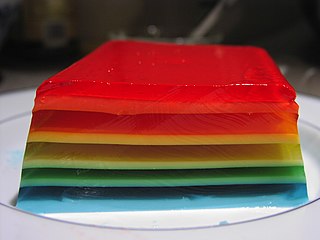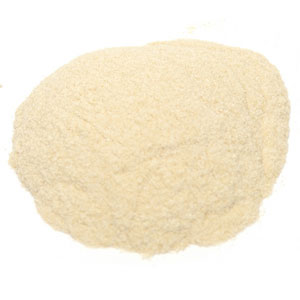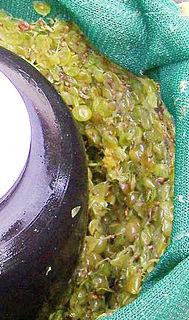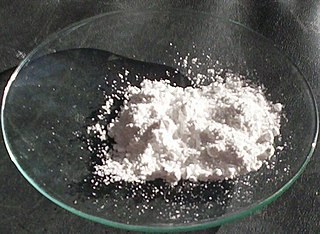
Bubble tea is a Taiwanese tea-based drink invented in Tainan and Taichung in the 1980s. It became known as “bubble tea” because of the thick layer of foam that forms on top of the drink after it is shaken. Recipes contain tea of some kind, flavors of milk, and sugar (optional). Toppings, known as "pearls", such as chewy tapioca balls, popping boba, fruit jelly, grass jelly, agar jelly, and puddings are often added. Ice-blended versions are frozen and put into a blender, resulting in a slushy consistency. There are many varieties of the drink with a wide range of flavors. The two most popular varieties are black pearl milk tea and green pearl milk tea.

Jelly is a dessert made with a sweetened and flavored processed collagen product (gelatin). This kind of dessert is first recorded by Hannah Glasse in her 18th century book The Art of Cookery, appearing in a layer of trifle. Jelly is also featured in the best selling cookbooks of English food writers Eliza Acton and Isabella Beeton in the 19th century.
A preservative is a substance or a chemical that is added to products such as food, beverages, pharmaceutical drugs, paints, biological samples, cosmetics, wood, and many other products to prevent decomposition by microbial growth or by undesirable chemical changes. In general, preservation is implemented in two modes, chemical and physical. Chemical preservation entails adding chemical compounds to the product. Physical preservation entails processes such as refrigeration or drying. Preservative food additives reduce the risk of foodborne infections, decrease microbial spoilage, and preserve fresh attributes and nutritional quality. Some physical techniques for food preservation include dehydration, UV-C radiation, freeze-drying, and refrigeration. Chemical preservation and physical preservation techniques are sometimes combined.

Orange juice is a liquid extract of the orange tree fruit, produced by squeezing or reaming oranges. It comes in several different varieties, including blood orange, navel oranges, valencia orange, clementine, and tangerine. As well as variations in oranges used, some varieties include differing amounts of juice vesicles, known as "pulp" in American English, and "(juicy) bits" in British English. These vesicles contain the juice of the orange and can be left in or removed during the manufacturing process. How juicy these vesicles are depend upon many factors, such as species, variety, and season. In American English, the beverage name is often abbreviated as "OJ".

Pectin is a structural heteropolysaccharide contained in the primary cell walls of terrestrial plants. It was first isolated and described in 1825 by Henri Braconnot. It is produced commercially as a white to light brown powder, mainly extracted from citrus fruits, and is used in food as a gelling agent, particularly in jams and jellies. It is also used in dessert fillings, medicines, sweets, as a stabilizer in fruit juices and milk drinks, and as a source of dietary fiber.

Pomace, or marc, is the solid remains of grapes, olives, or other fruit after pressing for juice or oil. It contains the skins, pulp, seeds, and stems of the fruit.

The açaí palm, Euterpe oleracea, is a species of palm tree (Arecaceae) cultivated for its fruit, hearts of palm, leaves, and trunk wood. Global demand for the fruit expanded rapidly in the 21st century and so the tree is cultivated for that purpose primarily.
An adulterant is a substance found within other substances such as food, cosmetics, pharmaceuticals, fuel or other chemicals that compromises the safety or effectiveness of said substance.

Cranberry juice is the juice of the cranberry. The term "cranberry juice cocktail" refers to products that contain about 28% cranberry juice and the remainder either other fruit juices or water with sugar added. There are also low-calorie versions that use non-caloric sweeteners.
An anticaking agent is an additive placed in powdered or granulated materials, such as table salt or confectionaries to prevent the formation of lumps (caking) and for easing packaging, transport, flowability, and consumption. Caking mechanisms depend on the nature of the material. Crystalline solids often cake by formation of liquid bridge and subsequent fusion of microcrystals. Amorphous materials can cake by glass transitions and changes in viscosity. Polymorphic phase transitions can also induce caking.

A thickening agent or thickener is a substance which can increase the viscosity of a liquid without substantially changing its other properties. Edible thickeners are commonly used to thicken sauces, soups, and puddings without altering their taste; thickeners are also used in paints, inks, explosives, and cosmetics.

Prune juice is a fruit juice derived from prunes that have been rehydrated. It is a mass-produced product that is often produced using a hot extraction method, and juice concentrate is typically produced using a low-temperature extraction method. It is used by some as a dietary supplement to act as a laxative and to alleviate constipation. It is also sometimes used as a flavor enhancer in tobacco products.
Earthen plaster is a blend of clay, fine aggregate, and fiber. Other common additives include pigments, lime, casein, prickly pear cactus juice (Opuntia), manure, and linseed oil. Earthen plaster is usually applied to masonry, cob, or straw bale interiors or exteriors as a wall finish. It provides protection to the structural and insulating building components as well as texture and color.

Fruit preserves are preparations of fruits, vegetables and sugar, often stored in glass jam jars.

The juice vesicles aka citrus kernels of a citrus fruit are the membranous content of the fruit's endocarp. All fruits from the Citranae subtribe, subfamily Aurantioideae, and family Rutaceae have juice vesicles. The vesicles contain the juice of the fruit and appear shiny and baglike. Vesicles come in two shapes: the superior and inferior, and these are distinct. Citrus fruit with more vesicles generally weighs more than those with less vesicles. Fruits with many segments, such as the grapefruit or pomelo, have more vesicles per segment than fruits with fewer segments, such as the kumquat and mandarin. Each vesicle in a segment in citrus fruits has approximately the same shape, size, and weight. About 5% of the weight of an average orange is made up of the membranes of the juice vesicles.

The lemon, Citrus limon (L.) Osbeck, is a species of small evergreen tree in the flowering plant family Rutaceae, native to South Asia, primarily North eastern India.

Juice is a drink made from the extraction or pressing of the natural liquid contained in fruit and vegetables. It can also refer to liquids that are flavored with concentrate or other biological food sources, such as meat or seafood, such as clam juice. Juice is commonly consumed as a beverage or used as an ingredient or flavoring in foods or other beverages, as for smoothies. Juice emerged as a popular beverage choice after the development of pasteurization methods enabled its preservation without using fermentation. The largest fruit juice consumers are New Zealand and Colombia. Fruit juice consumption on average increases with country income level.
















